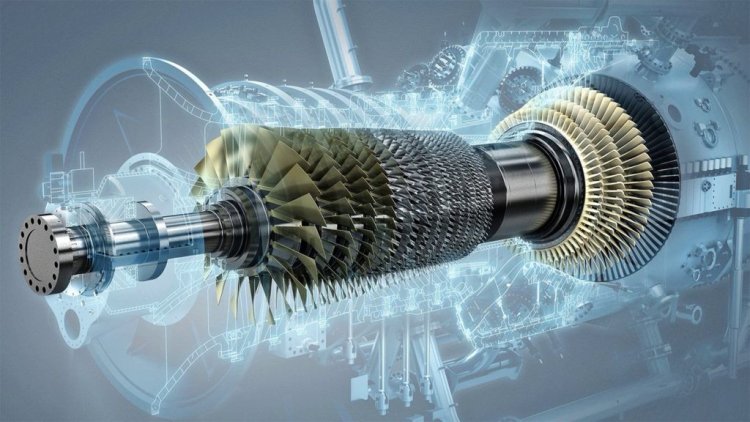How Gas Turbine Control Systems Lower Operational Costs Compared to Steam Turbines

Efficient energy production is a key priority for industries worldwide. In the quest for cost-effective power generation, gas turbines and steam turbines often emerge as two major contenders. Gas turbines and steam turbines are two of the most widely used technologies in this domain, each offering unique advantages. However, recent advancements in gas turbine control systems have positioned them as a more economical choice for reducing operational costs.
Gas turbine control systems leverage advanced automation, real-time monitoring, and precise fuel management to optimize performance and minimize expenses. Compared to the complex steam turbine systems, which rely heavily on intricate processes and higher maintenance demands, gas turbines provide a streamlined, flexible, and cost-efficient solution.
Understanding Gas Turbine and Steam Turbine Systems
Gas turbines and steam turbines are two of the most widely used technologies in power generation, each with its own set of advantages and applications. Both systems convert thermal energy into mechanical energy, but they operate on different principles and offer unique benefits depending on the requirements of a given application. Understanding the fundamental differences between these two systems is essential for choosing the right technology for specific energy needs.
Gas Turbine Systems
A gas turbine operates on the principle of combustion. In a gas turbine system, air is compressed, mixed with fuel (such as natural gas or diesel), and ignited. The resulting high-pressure, high-temperature gases expand rapidly and pass through a turbine, generating mechanical energy that drives a generator or other equipment. Gas turbines are typically used in applications where quick response times, high efficiency, and fuel flexibility are essential.
Steam Turbine Systems
Steam turbines, on the other hand, use steam to drive the turbine blades. In a steam turbine system, water is heated (usually by burning fossil fuels or using nuclear energy) to produce steam. The high-pressure steam is then directed through the turbine, causing the blades to spin and generate mechanical energy. Steam turbines are commonly used in large-scale power plants, especially in applications where continuous, base-load power generation is required.
Key Factors Contributing To Lower Operational Costs
Enhanced Operational Flexibility
Gas turbines are designed to respond quickly to changes in power demand, making them ideal for dynamic and unpredictable energy markets. Unlike steam turbines, which require significant time to reach optimal operating conditions due to their complex steam cycles and heat-up time, gas turbines can start up or shut down in a matter of minutes. This rapid response capability allows gas turbines to adjust their output quickly in response to fluctuations in electricity demand, ensuring that power generation remains reliable and efficient. Additionally, gas turbine control systems can manage load variations seamlessly, optimizing fuel consumption and ensuring that energy is produced only when needed, reducing waste and improving overall efficiency.
Higher Efficiency Through Precise Monitoring
Gas turbine control systems significantly enhance efficiency by utilizing advanced sensors and real-time monitoring capabilities. These systems continuously track critical parameters such as temperature, pressure, and fuel flow, ensuring that the turbine operates at optimal conditions. By gathering and analyzing this data in real time, control systems can make immediate adjustments to enhance performance and minimize energy waste. For instance, if any parameter deviates from its ideal range, the system can automatically modify the turbine's operation to bring it back to optimal levels. This precise monitoring not only improves the turbine’s fuel efficiency but also contributes to more consistent performance, even during variable operating conditions.
Lower Maintenance Requirements
Gas turbines generally require less maintenance compared to steam turbines due to their simpler design and fewer moving parts. The advanced control systems in gas turbines also play a crucial role in reducing maintenance needs by continuously monitoring the turbine's performance and detecting early signs of potential issues. These systems can identify problems before they lead to major failures, allowing for more efficient, planned maintenance rather than costly, unplanned repairs. Additionally, gas turbines are less prone to the wear and tear associated with the high-pressure and high-temperature conditions found in steam turbines. Their streamlined operation results in less stress on key components, contributing to longer intervals between maintenance and lower overall maintenance costs.
Fuel Flexibility and Optimization
Gas turbines offer significant fuel flexibility, allowing them to operate efficiently on a wide range of fuel types, including natural gas, diesel, and even alternative fuels like biogas. This adaptability is a major advantage in today’s dynamic energy market, where fuel prices can fluctuate, and access to certain fuel types may vary. Gas turbine control systems optimize fuel use by automatically adjusting combustion parameters based on the type of fuel being used, ensuring efficient operation across a broad spectrum of fuel options. Furthermore, these systems can switch between fuels seamlessly, allowing operators to take advantage of lower-cost or more readily available fuels when necessary. This fuel optimization not only reduces overall fuel costs but also contributes to lower emissions, as the system can adjust to burn cleaner fuels or operate at optimal efficiency for any given fuel type.
Simplified Design and Operation
Gas turbines are known for their simplified design and operation compared to steam turbines, which often involve complex setups with boilers, condensers, and multiple stages of heat exchange. The streamlined nature of gas turbines, with fewer components and a more straightforward operational process, reduces both initial installation costs and ongoing operational complexity. Gas turbine control systems integrate the entire operation, automating processes such as fuel injection, air intake, and turbine speed regulation, which minimizes the need for manual intervention. This reduces the requirement for a large workforce and specialized training, leading to lower labor costs and improved operational efficiency. Furthermore, the compact design of gas turbines means they require less space and infrastructure, reducing facility costs and enabling easier maintenance access.
GE gas turbine control system
GE gas turbine control systems are advanced technologies designed to ensure optimal performance, efficiency, and reliability in gas turbines used in power generation and industrial applications. These systems monitor and regulate critical turbine parameters such as speed, temperature, fuel flow, and load, ensuring smooth and safe operation. The systems utilize various sensors, actuators, and control software to continuously assess turbine health, making real-time adjustments to maintain efficiency and prevent failures.
One of the key features of GE’s gas turbine control systems is their ability to provide comprehensive protection and monitoring. The systems include fault detection and diagnostic tools that enable operators to identify and address potential issues before they lead to failures. Additionally, GE's systems optimize turbine performance by using algorithms that enhance fuel efficiency and power output, while also leveraging predictive analytics for proactive maintenance. This helps reduce downtime and improves the overall reliability of the turbine.
Incorporating cutting-edge technologies like Digital Twin and cloud-based monitoring, GE's gas turbine control systems offer advanced features that enable remote monitoring and predictive maintenance. Operators can access real-time data and insights through user-friendly interfaces, making it easier to manage turbine operations and respond to emerging issues. These systems are scalable and compatible with both new and existing turbines, offering flexibility and ease of integration with other control systems in the power plant.
DS200DTBBG1ABB, DS200SLCCG3AGH, DS200TCDAG2BCB, DS200TCDAG1BDB are examples of GE gas turbine control systems.
Conclusion
Gas turbine control systems are redefining the landscape of power generation by offering unmatched operational efficiency, reliability, and cost savings. Their ability to optimize performance, reduce downtime, and manage fuel usage makes them a superior choice for industries aiming to cut costs without compromising on energy output.
What's Your Reaction?



















